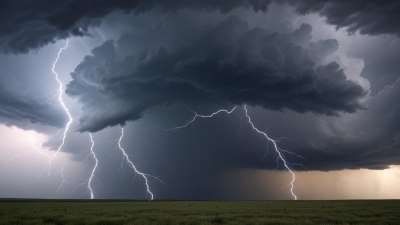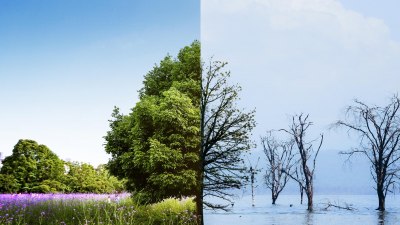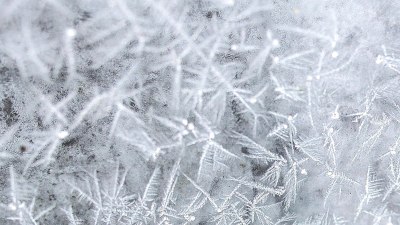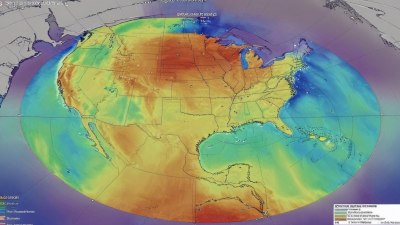Why Some Storms Move Backward
Discover the fascinating reasons why certain storms exhibit retrograde motion and the science behind it.

This image was created with the assistance of Freepik
When we think of storms, we often picture them moving in a predictable pattern, typically from west to east due to the prevailing westerlies. However, there are instances when storms exhibit a peculiar phenomenon known as retrograde motion, where they appear to move backward, or against the norm. Understanding the science behind this unusual behavior can provide insight into meteorological dynamics and the conditions that lead to such anomalies.
To fully grasp the concept of retrograde motion in storms, one must first consider the Earth’s atmospheric circulation. The movement of air masses is influenced significantly by the Coriolis effect, which is the result of the Earth’s rotation. This effect causes winds in the Northern Hemisphere to deflect to the right and in the Southern Hemisphere to deflect to the left. Generally, this results in storm systems moving toward the east. However, several factors can lead to a reversal of this expected behavior.
Influence of High-Pressure Systems
High-pressure systems play a crucial role in dictating storm paths. When a high-pressure area is situated to the north or west of an approaching low-pressure system (which is typically associated with storms), it can alter the usual flow of air. In such cases, the low-pressure system may become trapped and start to circulate in a retrograde manner, moving from east to west instead. This can happen, for example, during the winter seasons when cold air masses dominate the northern regions, and these high-pressure systems can steer storms in unexpected directions.
Jet Streams and Storm Path Alterations
Jet streams, which are fast-flowing air currents high in the atmosphere, can also influence storm motion. The position and strength of jet streams shift with changes in the season and can lead to significant alterations in how storms travel. Sometimes, a dip or ridge in the jet stream may cause a storm to slow down or change direction dramatically. This can create conditions where a storm might loop back on itself, giving the appearance of retrograde motion. Understanding these jet stream dynamics is essential for meteorologists predicting storm paths.
Topography and Local Effects
The geographical landscape can significantly affect storm behavior as well. Mountain ranges, valleys, and other geographical features can disrupt the path of storms. For instance, when a storm encounters a mountain range, it may slow down or become distributed in a manner that leads to retrograde motion. Local wind patterns generated by uneven heating of the Earth's surface, particularly in areas with significant topographical variance, can create a complex interaction that alters storm dynamics.
Seasonal Trends and Climate Variability
Seasonal trends also contribute to retrograde storm motion. For example, in tropical regions, storm systems such as hurricanes typically follow a westward path due to trade winds. However, during certain times of the year, variations in sea surface temperatures and atmospheric conditions can cause these storms to deviate from their typical paths, sometimes even backtrack. The influence of climate variability, including El Niño and La Niña phenomena, can lead to shifts in storm paths and behaviors, making retrograde motion more common.
Case Studies of Retrograde Motion
Several notable storms in history exhibit retrograde motion, offering lessons in understanding this phenomenon. One significant case was that of Hurricane Sandy in 2012, which took an unusual path toward the northwest rather than heading northeast as expected. The positioning of a high-pressure system to the north played a critical role in this deviation. Similarly, the 1992 Hurricane Andrew experienced shifts in direction influenced by changes in local wind patterns caused by the presence of an elongated trough.
These events highlight a crucial point: predicting storm behavior requires considering a complex mixture of factors, including atmospheric conditions, jet stream patterns, and geographical influences. Forecasters use advanced weather models to analyze these variables, allowing them to predict storm paths with greater accuracy.
The Role of Technology in Storm Tracking
Modern meteorology benefits immensely from advancements in technology. Satellite imagery, radar systems, and numerical weather predictions have drastically improved meteorologists' ability to track storms and predict their paths. Real-time data collection allows for the immediate analysis of factors contributing to retrograde motion, enabling quicker responses to potential hazards. Understanding these storms’ retrograde motion through scientific modeling has led to enhanced forecasting that improves public safety and preparedness.
Implications of Retrograde Motion on Forecasting
When storms exhibit retrograde motion, it poses unique challenges for forecasting. Meteorologists must continuously monitor changing atmospheric conditions and adjust predictions accordingly. This unpredictability can have significant implications, particularly for regions prone to severe weather events. Enhanced knowledge of storm dynamics enables more accurate predictions, which is vital for public awareness and safety. It informs emergency preparedness protocols and helps communities respond effectively to varying storm threats.
The Future of Storm Research
As climate change continues to influence global weather patterns, understanding retrograde motion becomes increasingly vital. Research into how shifts in climate may alter storm behaviors, including their paths and strengths, is an ongoing field of study. Scientists are particularly concerned about how rising sea temperatures interact with atmospheric systems, potentially increasing the frequency and intensity of storms that may display retrograde behavior. Continued exploration in this area will provide crucial insights into the changing nature of storms and how societies can adapt to mitigate the impacts of extreme weather.
In conclusion, the retrograde motion of storms represents a fascinating intersection of meteorology, geography, and climate science. By understanding the factors that contribute to this unusual phenomenon—high-pressure systems, jet streams, topographical influences, seasonal trends, and technological advancements—we can better appreciate the complexities of our atmosphere. As researchers delve deeper into this subject, their findings will enhance our understanding of storm behavior and ultimately lead to improved safety measures for communities at risk. The future holds significant potential for uncovering further intricacies of storm motions and their implications in a rapidly changing climate.











